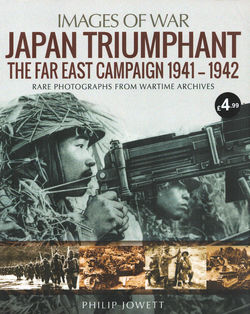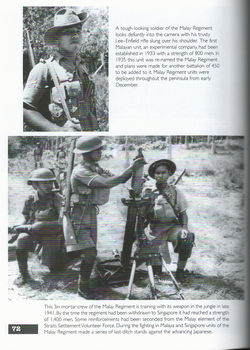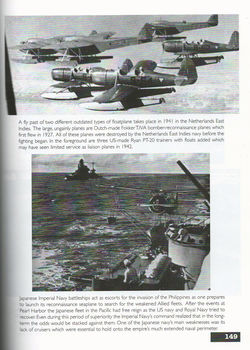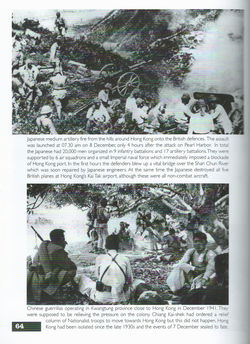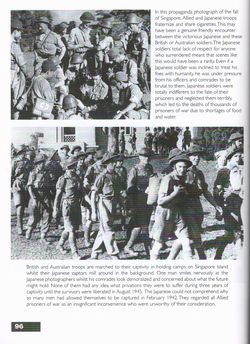JAPAN TRIUMPHANT
WW2 FAR EAST CAMPAIGN 1941-42 SINGAPORE PHILIPPINES HONG KONG MALAYA NETHERLANDS
EAST INDIES BURMA THE WAR AT SEA FRENCH INDOCHINA BRITISH ARMY MANCHESTER
REGIMENT SINGAPORE VOLUNTEER CORPS AUSTRALIAN TROOPS STRAITS SETTLEMENT
VOLUNTEER FORCE MARMON-HERRINGTON KNIL PEARL HARBOR WAKE ISLAND GURKHA
REGIMENTS MALAY REGIMENT
IMAGES OF WAR SOFTBOUND BOOK in
ENGLISH by PHILIP JOWETT
RARE PHOTOGRAPHS FROM WARTIME
ARCHIVES
Imperial Japan’s ambitious
offensive at the beginning of WWII is captured in dramatic detail in this
pictorial history featuring rare wartime photographs.
The Japanese offensive in the
Far East in 1941-1942 was extraordinary in its ambition, for their aim was to
advance across the entire region. They clashed with an array of forces in a
series of lightning campaigns that included famous episodes like the raid on
Pearl Harbor and the conquest of Singapore. In this vivid photographic history,
historian Philip Jowett covers the whole course of the offensive, portraying
not only the Japanese military which achieved such incredible success but the
armies they overwhelmed.
In a sequence of over 200
wartime photographs—many of which have never been published before—Jowett
covers the land, sea, and air fighting as the Japanese occupied so much of the
region. Rare images of the Japanese forces as they prepared for war and then
made seemingly unstoppable progress are matched with images of the armies they
surprised and vanquished. Japan Triumphant captures the character of the war in
the Far East, showing the appearance, equipment, and weaponry of the armies
involved as well as the conditions in which they fought.
----------------------------------------
Additional Information from
Internet Encyclopedia
The Pacific War lasted from 1941
to 1945, with the Empire of Japan fighting against the United States, the
British Empire and their allies. Most of the campaign was fought on a variety
of small islands in the Pacific region. Compared to the Western-European
Theater, combat in the Pacific was brutal, marked by illness, disease, and
ferocity. The Imperial Japanese Army (IJA) typically fought alone in these
engagements, often with very little naval or aerial support, and the IJA
quickly garnered a reputation for their unrelenting spirit.
At the beginning of the Pacific
War in 1941, the Imperial Japanese Army contained 51 divisions, 27 of which
were stationed in China. A further 13 divisions defended the Manchurian–Soviet
border, due to concerns about a possible attack by the Soviet Union. From 1942,
troops were sent to Hong Kong (23rd Army), the Philippines (14th Army),
Thailand (15th Army), Burma (15th Army), the Dutch East Indies (16th Army), and
Malaya (25th Army). A total of 5.473 million men served in the Imperial
Japanese Army.
Japanese troops suffered from a
shortage of supplies, especially food, medicine, munitions, and armaments,
largely due to submarine interdiction of supplies, and losses to Japanese
shipping, which was worsened by a longstanding rivalry with the Imperial Japanese
Navy. As many as two-thirds of Japan's total military deaths were a result of
illness or starvation.
Once the Pacific War began, the
Imperial Japanese Army quickly captured many critical areas. These included
British Malaya, Guam, the Philippines and Wake Island. A combination of
Japanese naval supremacy and the Allied doctrine of 'Europe first' meant they
saw relatively little opposition during this stage of the war – 85% of American
resources, and 68% of Army personnel went towards the European Theater. The
Japanese control of a large part of Oceania and Asia gave them a strong
initiative, as they were able to acquire many valuable resources, including
rubber, tin, bauxite and oil – Japan had no domestic sources of oil, but in
1942 the Dutch East Indies was the fourth largest global producer of oil.
Japan's service rifle was the
Type 38 rifle, a 5-round bolt-action rifle firing the 6.5×50mmSR Arisaka
cartridge, which had been adopted prior to the Second Sino-Japanese War.
However, its round was found to be lacking in power, and it was replaced by the
Type 99 rifle, which used the 7.7×58mm Arisaka, giving it ballistic performance
more comparable to rifle cartridges used by other countries, such as the
American .30-06 or British .303. Both rifles were used until the end of the
war.
The most common machine guns
used were the Type 96 and Type 99 light machine gun, firing the 6.5mm and 7.7mm
round, respectively. They fired from 30-round magazines, loaded from the top,
and though these weapons externally resemble the British Bren gun, and are
sometimes believed to be copies, they are functionally and internally separate.
These machine guns have a much higher rate of fire than the Bren, resulting in
stoppages. To prevent this, the ammunition had to be oiled before use, and
special reduced-charge rounds were issued to machine gun crews. Unusually for a
machine gun, these weapons could be fitted with a bayonet. Japan also used two
heavy machine guns, the Type 3 and Type 92, both of which fired from a 30-round
feed tray. Both weapons were derived from the World War I-era Hotchkiss Mle
1914 machine gun, and were considerably outdated by the 1930s, but was never
properly phased out due to wartime scarcity.
The only submachine gun in
service in the Japanese Empire was the Type 100. It fired the 8x22mm Nambu
round, which had only half the muzzle velocity of the 9×19mm Parabellum used by
Britain and Germany. The Type 100 was modelled after the German MP-18, and only
a few thousand were built, compared to 1.75 million Thompsons, the SMG in use
in the United States.
A weapon somewhat unique to the
Imperial Japanese Army is the Type 89 grenade discharger, sometimes referred to
as the knee mortar (a misnomer, as it is not fired from the knee),[36] a
man-portable mortar, that could also be used in direct fire. Three Type 89's
were issued per platoon, making it the IJA's most widely used infantry support
weapon.
Japanese armor was also lacking.
During the interwar period, Japan bought various Vickers 6-Tons, and largely
modelled their own tank designs after them, but the effectiveness of such tanks
was very limited. Japanese tanks were mostly used for reconnaissance and supply
purposes as they were ineffective in direct combat against other tanks. Neither
the light Type 95 Ha-Go nor the medium Type 97 Chi-Ha could penetrate an M4
Sherman frontally. Furthermore, while the United States Marines deployed twelve
M3 half-tracks per battalion, while these vehicles were originally designed as
tank destroyers, in the Pacific they were predominantly used as artillery,
since Japanese tanks were so infrequently encountered. American light tanks
such as the M5 Stuart and medium M3 Lee, while considered inadequate in Europe,
were deployed in the Pacific, as they were sufficient in dealing with the
Japanese.
Food supply
The US Navy focused on attacking
freighters, tankers and transports, which caused an escalating food shortage.
The soldiers lost weight and stamina. On Guadalcanal, the few draft animals
were eaten and fuel ran out, boots wore out, carts broke down. The soldiers
carried or pulled heavy loads through the jungle, using up energy as their body
weight declined. Units on bypassed
islands refused to surrender, and they suffered malnutrition, which made
diseases like malaria more fatal. Medicine ran out. In Japanese units in
Eastern New Guinea in 1943, after 6 weeks symptoms of malaria began to appear
and spread steadily. After 5 to 6 months, only one-seventh of the soldiers were
still healthy. On Woleai, a small island in the Western Carolines, 6,400
Japanese troops guarded an airstrip, American forces bypassed Woleai, so there
was no ground fighting. Nevertheless nearly 5,000 of the men died, almost all
from malnutrition and disease. According to Saburo Ienaga, the remaining food
supplies were allocated by rank. "The brigade staff got more than the
subordinate unit staffs; officers got more than enlisted men....Rank had its
privileges even in death. The fatality rate on [Woleai] was 38 percent for
officers and 74 percent for enlisted men and noncommissioned officers."
Tactics
In Imperial Japan's military
culture, heavy emphasis was put onto unrelenting spirit ('seishin'). Tactical
doctrine relied on unrelenting attack and surprise, to such an extent that the
word 'retreat' was de facto banned. Instead, it was called a repositioning, or
a transfer.
The IJA was built on bushido,
the moral code of the samurai in which honor surmounted all else, which is why
so exceptionally few Japanese soldiers willingly surrendered – during the
Battle of Kwajalein, of the 5,000 Japanese men on the island, 4,300 were
killed, and only 166 were captured.[53] If a force was in danger of being
overwhelmed, it would not be unusual for a commander to issue a banzai charge,
in which the Japanese would charge their enemy with bayonets, whilst shouting
""Tennōheika Banzai" (meaning "Long live His Majesty the
Emperor." Towards the end of the war, banzai charges became less frequent
due to their ineffectiveness, as the Marines had sufficient firepower and
training to deal with them.[54] During the Battle of Iwo Jima, General
Tadamichi Kuribayashi prohibited banzai charges, as he believed they were a
waste of manpower.
American propaganda distributed
through leaflet drops accounted for about 20% of surrenders, equating to about
one POW for every 6,000 leaflets dropped. Most Japanese objected to the
"unscrupulous" leaflets, which claimed that American forces would be
willing to accept surrenders from the Japanese. These suicides were motivated
by a combination of bushido, which was enforced through propaganda, as well as
reports that American soldiers would mutilate dead Japanese, sometimes taking
their teeth and skulls as war trophies.



